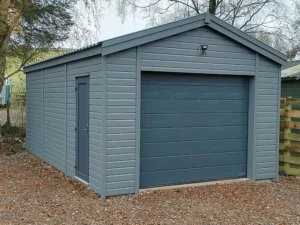CNC machining, the backbone of modern manufacturing, is undergoing a transformation in 2025. As industries like aerospace, automotive, and medical devices demand lighter, stronger, and more durable materials, the rise of composites and superalloys is reshaping the CNC landscape. From carbon fiber composites to nickel-based alloys, these new materials promise unparalleled performance but come with unique challenges. This article explores how CNC machining is adapting to these materials, the innovations driving progress, and what it means for manufacturers aiming to stay competitive. Whether you’re a shop owner, engineer, or industry enthusiast, here’s a deep dive into the future of CNC machining in the age of new materials.
The Rise of Composites and Alloys in CNC Machining
The manufacturing world is buzzing with excitement over new materials. Carbon fiber reinforced plastics (CFRP) and glass fiber composites are becoming go-to choices for industries chasing lightweight, high-strength solutions. Aerospace giants like Boeing and Airbus rely on CFRP for up to 50% of their aircraft structures, reducing weight by 30% compared to traditional metals. In the automotive sector, electric vehicle (EV) makers like Tesla use composites for battery enclosures, boosting efficiency without sacrificing safety.
Superalloys, like nickel-based Inconel or titanium alloys, are equally transformative. These materials thrive in extreme conditions—think jet engines or medical implants—offering unmatched durability and heat resistance. The global CNC machining market, projected to hit $101.2 billion in 2025 and grow to $195.9 billion by 2032 (CAGR of 9.9%), is fueled partly by demand for these materials. But with great promise comes great complexity. Machining composites and alloys requires rethinking tools, processes, and even workforce skills.
Table 1: Key New Materials in CNC Machining (2025)
| Material | Industry | Key Properties | Applications | Market Growth (2023-2030) |
| Carbon Fiber (CFRP) | Aerospace, Automotive | Lightweight, high strength | Aircraft fuselages, EV battery cases | 12.5% CAGR (Statista, 2024) |
| Glass Fiber Composites | Automotive, Marine | Cost-effective, corrosion-resistant | Car panels, boat hulls | 8.7% CAGR (MarketWatch, 2024) |
| Titanium Alloys | Aerospace, Medical | High strength-to-weight, biocompatible | Turbine blades, implants | 10.2% CAGR (Grand View, 2024) |
| Nickel-Based Alloys | Energy, Aerospace | Heat-resistant, durable | Jet engines, gas turbines | 9.8% CAGR (Deloitte, 2024) |
| Aluminum Composites | Automotive, Electronics | Lightweight, thermally conductive | Heat sinks, structural parts | 7.9% CAGR (IndustryArc, 2024) |
Challenges of Machining New Materials: From Fibers to Superalloys
New materials may be the darlings of modern engineering, but they’re no walk in the park for CNC machinists. Composites like CFRP are notorious for their layered structure, which can delaminate or fray during cutting. Their heat sensitivity demands low-temperature machining, as excessive heat can degrade the material’s integrity. Superalloys, meanwhile, are tough—literally. Their high hardness and toughness require immense cutting forces, wearing out tools 50% faster than when machining steel (NIST, 2024).
Then there’s the precision issue. Aerospace parts, for instance, demand tolerances as tight as 0.01mm, and any micro-crack in a titanium implant could spell disaster. Add to that the high-mix, low-volume production trend, where shops must frequently adjust setups for small batches of complex parts. This not only slows production but also spikes costs, with some shops reporting a 30% increase in tool replacement expenses when machining superalloys. For small and medium-sized enterprises (SMEs), these challenges can feel like a steep hill to climb.
Upgrading CNC Tools and Machines for Next-Gen Materials
To tackle these challenges, CNC shops are investing in advanced tools and equipment. Multi-axis CNC machines, like 5-axis machining centers, are becoming essential for handling the complex geometries of composite and alloy parts. These machines offer greater flexibility, reducing setup times and improving precision. For example, DMG Mori’s latest 5-axis systems cut delamination in CFRP parts by 40% compared to 3-axis setups.
Tooling is another battleground. Polycrystalline diamond (PCD) and ceramic-coated tools are gaining traction for their durability against abrasive composites and hard alloys. However, these tools come with a hefty price tag—PCD tools can cost 5-10 times more than standard carbide tools. High-speed spindles (20,000+ RPM) are also critical for superalloys, but upgrading equipment can strain budgets, especially for SMEs. The good news? Modular CNC systems and retrofit kits are making upgrades more accessible, allowing shops to adapt without breaking the bank.
Table 2: CNC Tooling Solutions for New Materials
| Tool Type | Material Target | Advantages | Cost Premium | Lifespan Improvement |
| PCD Tools | Composites (CFRP) | High wear resistance, clean cuts | 5-10x carbide | 3x longer than carbide |
| Ceramic-Coated Tools | Superalloys (Inconel) | Heat resistance, durability | 3-5x carbide | 2x longer than carbide |
| Carbide Tools | Aluminum Composites | Cost-effective, versatile | Baseline | Standard |
| CBN Tools | Titanium Alloys | High hardness, precision cutting | 4-8x carbide | 2.5x longer than carbide |
| Hybrid Tools | Mixed Materials | Balanced performance for multi-material | 3-6x carbide | 2x longer than carbide |
AI and Process Innovation: Tackling Complex Material Demands
Artificial intelligence (AI) is proving to be a game-changer for CNC machining. By optimizing tool paths, AI reduces cutting forces and material waste, addressing the unique demands of composites and alloys. For instance, AI-driven software like Autodesk’s PowerMill can cut machining time for CFRP parts by 25% through smarter path planning. Predictive maintenance, powered by AI, also minimizes downtime by forecasting tool wear or machine issues, with Deloitte reporting a 75% success rate in detecting problems hours in advance.
Cryogenic cooling—using liquid nitrogen or dry ice—is another innovation gaining traction. It keeps composites cool during machining, preventing thermal damage, and extends tool life by up to 20%. Adaptive control systems, which adjust parameters in real-time based on material feedback, are also helping shops tackle the variability of superalloys. These technologies not only boost efficiency but also make CNC machining more sustainable by reducing energy and material waste.
Hybrid Manufacturing: Blending CNC with 3D Printing
One of the most exciting developments in CNC machining is hybrid manufacturing, which combines traditional CNC with additive manufacturing (3D printing). This approach allows shops to build complex alloy or composite parts layer by layer, then finish them with CNC precision. For example, GE Aviation uses hybrid systems to produce titanium turbine blades, cutting production costs by 30% and lead times by 20%.
Hybrid manufacturing shines in high-mix, low-volume scenarios, where flexibility is key. It also reduces material waste, aligning with the industry’s push for sustainability. However, integrating these systems requires significant investment and expertise, which can be a hurdle for smaller shops. Still, as platforms like MakerVerse offer on-demand hybrid services, SMEs can tap into this technology without owning the equipment.
Real-World Applications: Aerospace, Automotive, and Medical
The impact of new materials is most evident in high-stakes industries. In aerospace, Boeing’s 787 Dreamliner relies on CFRP for its fuselage, demanding CNC machines that can handle tight tolerances and complex curves. Superalloys like Inconel are critical for jet engines, where precision machining ensures performance under extreme heat. In automotive, EV makers are using composites for lightweight battery enclosures, with Rivian reporting a 15% weight reduction in its R1T truck thanks to CFRP components.
The medical industry is another hotspot, with titanium alloys powering biocompatible implants. These parts require ultra-precise CNC machining to meet regulatory standards, often with tolerances below 0.005mm. The challenge? Small batch sizes and high costs, which push shops to adopt flexible, AI-driven workflows to stay competitive.
Table 3: Industry Applications of New Materials in CNC Machining
| Industry | Material Used | Key Component | CNC Challenge | Market Impact (2025) |
| Aerospace | CFRP, Titanium Alloys | Fuselages, turbine blades | Tight tolerances, delamination risks | $45B market share |
| Automotive (EV) | CFRP, Aluminum Composites | Battery enclosures, structural parts | High-mix, low-volume production | $30B market share |
| Medical Devices | Titanium Alloys | Implants, surgical tools | Ultra-precision, biocompatibility | $12B market share |
| Energy | Nickel-Based Alloys | Gas turbines, wind turbine components | High hardness, heat resistance | $15B market share |
| Marine | Glass Fiber Composites | Hulls, structural supports | Corrosion resistance, cost efficiency | $8B market share |
Balancing Cost, Efficiency, and Sustainability in New Material Machining
New materials bring a delicate balancing act. The high cost of tools and equipment upgrades can strain budgets, especially for SMEs. For instance, a single PCD tool can cost $500-$1,000, and retrofitting a CNC machine for high-speed spindles might run $50,000 or more. Yet, the payoff is clear: optimized machining can reduce material waste by 20% and energy use by 15%, aligning with sustainability goals.
On-demand manufacturing platforms, like MakerVerse, are helping shops manage costs by offering access to advanced equipment without upfront investment. Meanwhile, sustainable practices—like dry cutting or recyclable composites—are becoming industry standards, driven by regulations like the U.S.’s 2024 energy efficiency rules. The key is finding the sweet spot where innovation meets affordability.
The Future of CNC: Training and Tech for a Material Revolution
As new materials redefine CNC machining, the industry faces a dual challenge: technology and talent. With 25% of U.S. manufacturing workers over 55 and nearing retirement, the skills gap is a looming threat. Virtual reality (VR) training is stepping in, allowing new machinists to practice on simulated composites and alloys in a risk-free environment. Programs like these cut training time by 30% and boost retention of complex skills.
Looking ahead, the CNC machining market is set to soar, driven by demand for new materials and supported by policies like the U.S. CHIPS Act. Shops that invest in AI, hybrid manufacturing, and sustainable practices will lead the pack. For manufacturers, the message is clear: embrace the material revolution or risk falling behind.
Conclusion
CNC machining is at a crossroads, shaped by the rise of composites and superalloys. These materials offer incredible opportunities—lighter aircraft, more efficient EVs, life-saving implants—but demand new tools, smarter processes, and a skilled workforce. By leveraging AI, hybrid manufacturing, and sustainable practices, shops can overcome these challenges and thrive in a competitive market. Ready to take your CNC operations to the next level? Explore advanced tools, connect with on-demand platforms, and invest in training to stay ahead in the age of new materials.
FAQ:
1. What are the main challenges of CNC machining with composites like CFRP?
Composites like carbon fiber reinforced plastics (CFRP) pose challenges due to their layered structure, which can delaminate or fray during machining. Their heat sensitivity requires low-temperature cutting to avoid material degradation. Tool wear is another issue, as composites are abrasive, reducing tool life by up to 50% compared to metals (NIST, 2024). Advanced tools like polycrystalline diamond (PCD) and cryogenic cooling help address these challenges.
2. Why are superalloys like titanium and Inconel difficult to machine?
Superalloys have high hardness and toughness, requiring greater cutting forces and causing rapid tool wear—up to 50% faster than steel (NIST, 2024). They also demand tight tolerances (e.g., 0.01mm for aerospace parts) and precise parameter control to avoid micro-cracks. High-speed spindles (20,000+ RPM) and ceramic-coated tools are often necessary, increasing costs but ensuring quality.
3. How is AI transforming CNC machining for new materials?
AI optimizes tool paths, reducing cutting forces and waste, with software like Autodesk PowerMill cutting CFRP machining time by 25%. Predictive maintenance, powered by AI, detects equipment issues with 75% accuracy (Deloitte, 2024), minimizing downtime. Adaptive control systems also adjust parameters in real-time, making it easier to machine complex alloys and composites.
4. What is hybrid manufacturing, and how does it benefit CNC machining?
Hybrid manufacturing combines CNC machining with 3D printing to build complex parts layer by layer, then finish them with precision. It reduces production costs by up to 30% and lead times by 20% (e.g., GE Aviation’s titanium blades). It’s ideal for high-mix, low-volume production and minimizes material waste, aligning with sustainability goals.
5. Which industries rely most on CNC machining for composites and alloys?
Aerospace uses CFRP for fuselages and titanium alloys for engines, requiring ultra-precise machining. Automotive, especially electric vehicles, leverages composites for lightweight battery enclosures (e.g., Rivian’s 15% weight reduction). Medical devices depend on titanium alloys for biocompatible implants, demanding tolerances below 0.005mm.
6. How can small CNC shops afford to machine new materials?
Small shops face high costs for tools (e.g., $500-$1,000 for PCD tools) and equipment upgrades. Modular CNC systems and retrofit kits offer cost-effective solutions. On-demand platforms like MakerVerse provide access to advanced equipment without upfront investment, while AI-driven workflows reduce waste and improve efficiency.
7. What role does sustainability play in CNC machining with new materials?
Sustainability is critical, with practices like dry cutting and recyclable composites reducing waste by 20% and energy use by 15%. These align with regulations like the U.S.’s 2024 energy efficiency rules. Cryogenic cooling also minimizes environmental impact by avoiding chemical coolants, making machining greener.
Also Read-How to Get Professional Business Photos in Budget










